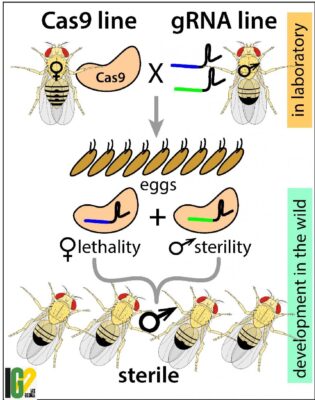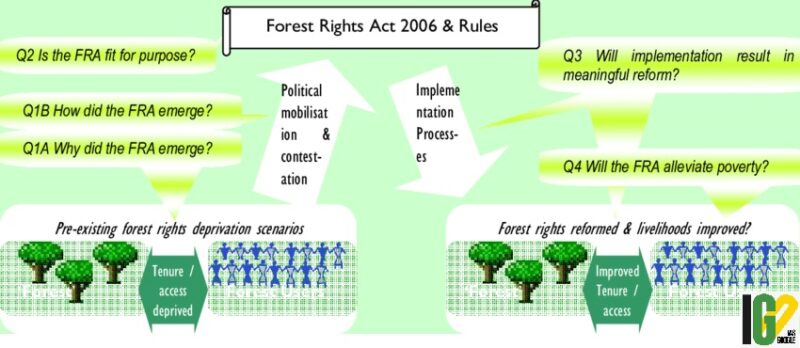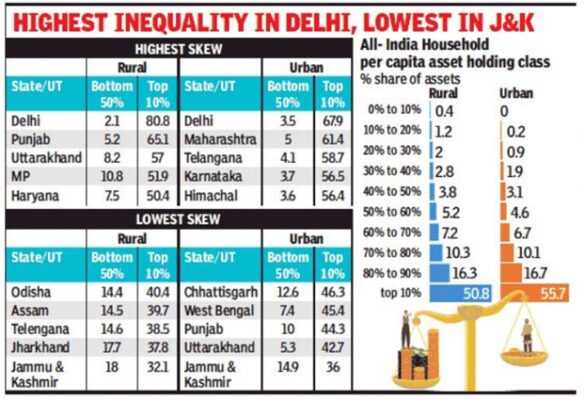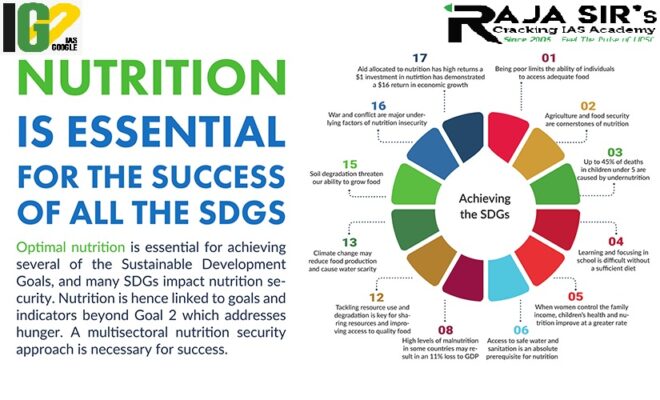- Home
- Prelims
- Mains
- Current Affairs
- Study Materials
- Test Series
 EDITORIALS & ARTICLES
EDITORIALS & ARTICLES
22nd Sep 2021
HINDI DIWAS 2021: KNOW ITS HISTORY AND SIGNIFICANCE
India celebrates Hindi Diwas on September 14 every year to commemorate the adoption of Hindi in the Devanagari script as one of the official languages of the nation.








- This day is celebrated to prevent the increasing trend of the English language in the nation and the neglect of Hindi.

- The Constituent Assembly of India accepted Hindi, written in Devanagari script, as the official language of India on September 14, 1949.
- The first Hindi Day was celebrated on September 14, 1953.
- The reason behind adopting Hindi as one of the official languages was to simplify administration in a nation with multiple languages.
- Rajbhasha Kirti Puraskar and Rajbhasha Gaurav Puraskar awards are also given to ministries, departments, public sector units (PSUs), nationalised banks and citizens on Hindi Diwas for their contribution and promotion of Hindi.
- Mahatma Gandhi called Hindi the language of the masses and talked about making Hindi the national language of the nation.
- Gandhi himself learned Hindi very diligently as he faced the language problem during the Champaran satyagraha in Bihar.
- Before joining the freedom movement, Gandhiji travelled all across India and found that Hindi is the only language that can connect the whole country.
- The Hindi that Gandhi used to write and speak was not called Hindi, but Hindustani.
- It was different from the Sanskritised Hindi of that time. It was simple Hindi, which Gandhi used as a communication language.
- Gandhi also brought out several newspapers in Hindi, English and Gujarati languages. He brought out two newspapers in Hindi - Navjeevan and Harijan Sevak.
- Gandhiji preferred to answer most of his letters in Hindi only.

- pgSIT is a new scalable genetic control system that uses a CRISPR-based approach to engineer deployable mosquitoes that can suppress populations.
- The technique-pgSIT, alters genes linked to male fertility– creating sterile offspring and female flight in Aedes aegypti.
- Aedes aegypti is responsible for spreading diseases including dengue fever, chikungunya and Zika.
- The pgSIT uses CRISPR to sterilise male mosquitoes and render female mosquitoes (which spread disease) flightless.
- pgSIT differs from “gene drive” systems that could suppress disease vectors by passing desired genetic alterations indefinitely from one generation to the next.
- The system is self-limiting and is not predicted to persist or spread in the environment.
- pgSIT eggs can be shipped to a location threatened by mosquito-borne disease or developed at an on-site facility that could produce the eggs for nearby deployment.
- Once the pgSIT eggs are released in the wild, sterile pgSIT males will emerge and eventually mate with females, driving down the wild population as needed.
- CRISPR stands for "clusters of regularly interspaced short palindromic repeats."
- It is a specialized region of DNA with two distinct characteristics:
- Presence of nucleotide repeats and spacers.
- Repeated sequences of nucleotides (building blocks of DNA) are distributed throughout a CRISPR region.
- Spacers are bits of DNA that are interspersed among these repeated sequences.
- CRISPR is a gene editing technology and is used in correcting genetic defects and treating and preventing the spread of diseases.
- It allows to easily alter DNA sequences and modify gene function.
- CRISPR is shorthand for "CRISPR-Cas9." CRISPRs are specialized stretches of DNA.
- The Cas9 protein is the most widely used by scientists.
- The protein Cas9 (or "CRISPR-associated") is an enzyme that acts like a pair of molecular scissors, capable of cutting strands of DNA.
- This protein can easily be programmed to find and bind to almost any desired target sequence.
- It has been adapted to do things such as turning genes on or off without altering their sequence.
- It can also be used to make precise changes such as replacing faulty genes – true genome editing – but this is far more difficult.
- It is already widely used for scientific research.
- It has the potential to transform medicine.
- CRISPR is being used for all kinds of other purposes too, from fingerprinting cells and logging what happens inside them to directing evolution and creating gene drives.
- Theme of the event: ‘India-Africa: Adopting Strategy for Synergizing and Strengthening Defence and Security Cooperation’
- This will help in building on the existing partnerships between India and the African Continent.
- It will give both sides to explore new areas of convergence in areas including maritime security, cyber security, counter terrorism, capacity building and training.
- It is going to held after two years of the first India-Africa Defence Ministers’ Conclave held in February 2020 in Lucknow.
- At the conclusion of the meeting a Joint Declaration, ‘Lucknow Declaration’ was adopted.
- Traditionally, DefExpo was always held at New Delhi’s Pragati Maidan.
- The government says that, the FT members were passing “consequential orders/directions”, while giving opinion. “This may not be a correct approach.”
- Apart from NRC drop-outs, FTs have been adjudicating cases of ‘doubtful voters’ and other references made by the Border Police in Assam.
- Set up by the Ministry of Home Affairs in 1964, FTs are quasi-judicial bodies that adjudicate citizenship in Assam.
- As per the Foreigners (Tribunals) Order, 1964, FTs were constituted to give an “opinion” on whether a person is a foreigner or not, as per Foreigners Act, 1946.
- Earlier, the powers to constitute tribunals were vested only with the Centre.
- The Act is unique to Assam, in other parts, once a ‘foreigner’ has been apprehended by the police for staying illegally, he or she is produced before a local court under the Passport Act, 1920, or the Foreigners Act, 1946.
- The FTs get two kinds of cases:
- Those against whom a “reference” has been made by border police, and
- Those whose names in the electoral rolls have a D (Doubtful) against them.
- Section 9 of the Foreigners Act says that “the onus of proving that such person is not a foreigner or is not a foreigner of such particular class or description, as the case may be, shall, notwithstanding anything contained in the Indian Evidence Act, 1872, lie upon such person”.
- Thus, the accused has to prove he or she is an Indian.
- The amended Foreigners (Tribunal) Order, 2019 empowers individuals to approach the Tribunals.
- Earlier, only the State administration could move the Tribunal against a suspect, but with the final NRC, if a person doesn’t find his or her name in the final list, they could move the Tribunal.
- This will elevate the socio-economic status of a sizeable section of the population of tribals and nomadic communities in the Union Territory.

- The Scheduled Tribes and Other Traditional Forest Dwellers (Recognition of Rights) Act (or the Forest Rights Act or FRA) was enacted in 2006 and came into force in 2008.
- The Act was enacted to protect the marginalised socio-economic class of citizens and balance the right to environment with their right to life and livelihood.
- It confers individuals’ title to habitat, and also aims to protect their tradition and culture by recognising their collective ownership over a larger landscape within or outside their traditional village territories.
- It provides for two kinds of rights to tribals and other forest dwellers.
- Individual rights over the dwelling and cultivation lands under their occupation.
- The community tenure/ rights over ‘community forest resources’ on common forest land within the traditional and customary boundaries of the village.
- However, the implementation of the Act in general and especially in Protected Areas (PAs) has been negligible.

- To undo the historical injustice occurred to the forest dwelling communities.
- To ensure land tenure, livelihood and food security of the forest dwelling Scheduled Tribes and other traditional forest dwellers.
- To strengthen the conservation regime of the forests by including the responsibilities and authority on Forest Rights holders for sustainable use, conservation of biodiversity and maintenance of ecological balance.
- The Act encompasses Rights of Self-cultivation and Habitation which are usually regarded as Individual rights; and Community Rights.
- It also provides rights to allocation of forest land for developmental purposes to fulfil basic infrastructural needs of the community.
- In conjunction with the Right to Fair Compensation and Transparency in Land Acquisition, Rehabilitation and Settlement Act, 2013 FRA protects the tribal population from eviction without rehabilitation and settlement.
- Under FRA, the rights of forest dwellers can recognised in protected areas including: national parks, wildlife sanctuaries, conservation and community reserves.
- The Bakarwals are known to be part of the larger ethnic group known as Gujjars who dominate large parts of Northern India, Pakistan and Afghanistan.
- In 1991, the Jammu and Kashmir government added the community to the list of Scheduled Tribes. In 2001, the Indian government officially declared them as a Scheduled Tribe.
- The Bakarwals of Jammu & Kashmir are predominantly Muslims and their way of life, language and customs are strikingly different as compared to their counterparts settled mostly in the plains of the state.
- A nomadic tribe, the Bakarwals are a migratory group, often recognised by the hundreds of kilometers long journey they take with their cattle every summer to Kashmir and Ladakh and back to Jammu in the winters.
- They rear sheep and goats.
- The Gaddis tribes is mainly found on both sides of the Dhauladhar Range of the state of Himachal Pradesh.
- It’s also dwell mainly in the Brahmaur region of Chamba District, in the higher regions of the Ravi River and also the valleys of the Budhil River.
- The main occupation of Gaddi tribes is shepherding and they make their livelihood by rearing and selling sheeps, goats, mules and horses.
- Semi-nomadic, the Gaddi migrate with their livestock during summers and wait out winters in their homes.
- They are considered to have descended from the persecuted escapees of Mughal emperor Aurangzeb’s reign.
- Both Hindu and Islam religions customs are practiced by huge population of Gaddi Tribal Community.
- The most important thing for any Gaddi Tribe is the 25 yards long strand that is tied to their wrist worn by both men and women which serves as the symbol of the Tribe.

- This initiative is in line with the central bank's vision of reviewing corridors and charges for inbound cross-border remittances outlined in the Payment Systems Vision Document 2019-21.
- The linkage builds upon the earlier efforts of NPCI International Private Limited (NIPL) and Network for Electronic Transfers (NETS) to foster cross-border interoperability of payments using cards and QR codes, between India and Singapore.
- While India uses Unified Payments Interface (UPI) as a fast payment method, Singapore uses the PayNow system.
- The UPI-PayNow linkage will enable users of each system to make instant, low-cost fund transfers on a reciprocal basis without a need to get onboarded onto the other payment system.
- The linkage will be a significant milestone in the development of infrastructure for cross-border payments between India and Singapore.
- It will also closely align with the G20's financial inclusion priorities of driving faster, cheaper and more transparent cross-border payments.
- UPI is India's mobile based, 'fast payment' system that facilitates customers to make round the clock payments instantly using a Virtual Payment Address (VPA) created by the customer.
- This eliminates the risk of sharing bank account details by the remitter.
- UPI supports both Person to Person (P2P) and Person to Merchant (P2M) payments as also it enables a user to send or receive money.
- PayNow is also an electronic fund transfer service that allows a user to transfer funds instantly to a payee, using his/her mobile number or NRIC/FIN or UEN number instead of his/her bank account number.
- PayNow supports nine participating banks and three Non-Bank Financial Institutions (NFIs).

- The survey was conducted from January to December 2019.
- Objective: To collect basic quantitative information on the assets and liabilities of the households as on 30.6.2018.
- The survey gathered information on the amount of capital expenditure incurred by the households during the Agricultural Year 2018-19.
- Assets were calculated by putting a monetary value on everything owned by households, including:
- Physical assets like land, buildings, livestock and vehicles
- Financial assets like shares in companies, deposits in bank, and post offices, etc.
- The richest 10% of Indians own over half of the country's physical and financial assets while the bottom 50% own less than 10%.
- The richest 10% own 55.7% of the total assets in urban areas and 50.8% in rural areas.
- The total physical and financial assets owned by people living in the rural areas was Rs 274.6 lakh crore.
- Out of which Rs 139.6 lakh crore was owned by the richest 10%.
- The bottom 50% owned 10.2% of assets in rural areas and an even smaller 6.2% in urban areas.
- Within rural areas, where close to two-thirds of India lives, the skew was the highest in Delhi.
- In Delhi the top 10% owned 80.8% of assets and the bottom 50% just 2.1%.
- Among large states, after Delhi, asset inequality in rural areas was highest in Punjab where the richest 10% own over 65% of assets and the bottom 50% just over 5%.
- Uttarakhand, Madhya Pradesh and Haryana had high inequality in asset ownership in the villages.
- Among large states (and UTs), the rural skew was the least in Jammu and Kashmir with the top 10% owning 32% and the bottom half 18%.
- Reserve Bank of India (RBI) has sent an internal note to all the banks directing them to put a specific number of foreign organizations in the PRC list (Prior Reference Category) under the Foreign Contribution Regulation Act (FCRA) 2010.
- These NGOs include-
- NGOs from USA named Omidyar Network International, Humanity United and Stardust foundation.
- NGOs from Australia named Walk Free Foundation and Minderoo Foundation.
- NGOs from the UK named Children’s Investment Fund Foundation, Freedom fund and Laudes foundation etc.
- The RBI has instructed that any fund flow from the (specified) donor agencies to any NGO/Voluntary organization/ persons in India should be brought to the Ministry of Home Affairs so that the funds are allowed to be credited to the recipients only after clearance/ prior permission from the MHA’s Foreigners Division of the FCRA wing.
- The FCRA approval of foreign funded NGOs including the Commonwealth Human Rights Initiative was suspended in June 2021.
- More than 6600 NGOs’ FCRA licenses were cancelled with around 260 of them suspended by the government during the period 2016-2020.

- Foreign Contribution (regulation) Act, 2010 is a consolidating act whose scope is to regulate the acceptance and utilisation of foreign contribution or foreign hospitality by individuals or associations or companies.
- The act regulates foreign donations and ensures that such contributions do not adversely affect internal security.
- It is implemented by the Ministry of Home Affairs.
- FCRA is applicable to all associations, groups and NGOs which intend to receive foreign donations.
- It is mandatory for all such NGOs to register themselves under the FCRA.
- The registration is initially valid for five years and it can be renewed subsequently if they comply with all norms.
- Registered associations can receive foreign contribution for social, educational, religious, economic and cultural purposes.
- Filing of annual returns, on the lines of Income Tax, is compulsory.
- The NGOs must give an undertaking that the acceptance of foreign funds is not likely to prejudicially affect the sovereignty and integrity of India or impact friendly relations with any foreign state and does not disrupt communal harmony.
- All such NGOs would have to operate accounts in either nationalised or private banks which have core banking facilities to allow security agencies access on a real time basis.
- The Act makes Aadhaar number mandatory for all office bearers, directors or key functionaries of a person receiving foreign contribution, as an identification document.
- All funds received by an NGO must be used only for the purpose for which they were received. No funds other than foreign contribution is deposited in the Foreign Contribution account.
- Such funds must not use in speculative activities identified under the Act.
- Except with the prior approval of the Authority, such funds must not be given or transferred to any entity not registered under the Act.
- Every asset purchased with such fund must be in the name of the NGO and not its office bearers or members.
- Any organisation of a political nature and any association engaged in the production and broadcast of audio- or audio-visual news have been placed in the category prohibited to accept foreign contribution.
- The report was released by Food and Agriculture Organization (FAO), UN Development Programme (UNDP) and UN Environment Programme (UNEP).
- The report has demanded reforming and repurposing agricultural support systems across the world.

- It focuses on the countries’ support to farmers that distort prices, encourage emission-intensive agriculture resulting in global warming and make the global agriculture trade an unequal one for the vast smallholder farmers.
- It has analysed countries support to farmers and their impacts on each of the above aspects.
- Annually, countries support agriculture up to $540 billion. More than half of this support is price-distorting and is largely harmful to the environment.
- Developed countries offer the best deal to their farmers to make them compete in world trade.
- Developing and emerging economies also offer support to farmers.
- Support to farmers in low-income countries in Sub-Saharan Africa is negligible.
- This is due to lack of financial resources and government’s focus on curbing prices to keep food prices low.
- Farming sector in India has been largely penalised, due to the strong focus of Indian agricultural policy on protecting consumers by ensuring affordable food prices.
- This led to implicitly taxing the farming sector.
- India along with Argentina and Ghana are exceptions in terms of:
- Taxing the producers to protect the consumers.
- Keep food inflation low and affordable for the general population.
- India’s Producer Support Estimate (PSE) is negative 5.7% for Indian farmers, which led to the loss of $23 billion for them in 2019.
- However, farmers enjoy support like cash transfer in India (PM-KISAN, scheme that transfers Rs 6,000/year to farmers).
- Pursue global efforts to repurpose agricultural support as key catalyst for food systems transformation in order to achieve the SDGs.
- Develop country-specific data and analysis to inform the design and implementation of effective repurposing strategies that put sustainable development as centerpiece.
- Foster greater cooperation across government, research institutions, non-governmental organizations, and the private sector at country level.
- Close data, research, and knowledge gaps on the status, characteristics and impacts of agricultural support, in collaboration with relevant international organizations.
- Advance commitments within World Trade Organization (WTO) and other trade agreements and promote further reduction of trade distorting measures and coupled subsidies.
- Develop standard monitoring systems to be adopted by countries to track the outcomes of agricultural policies and their repurposing and reform.









 Latest News
Latest News General Studies
General Studies